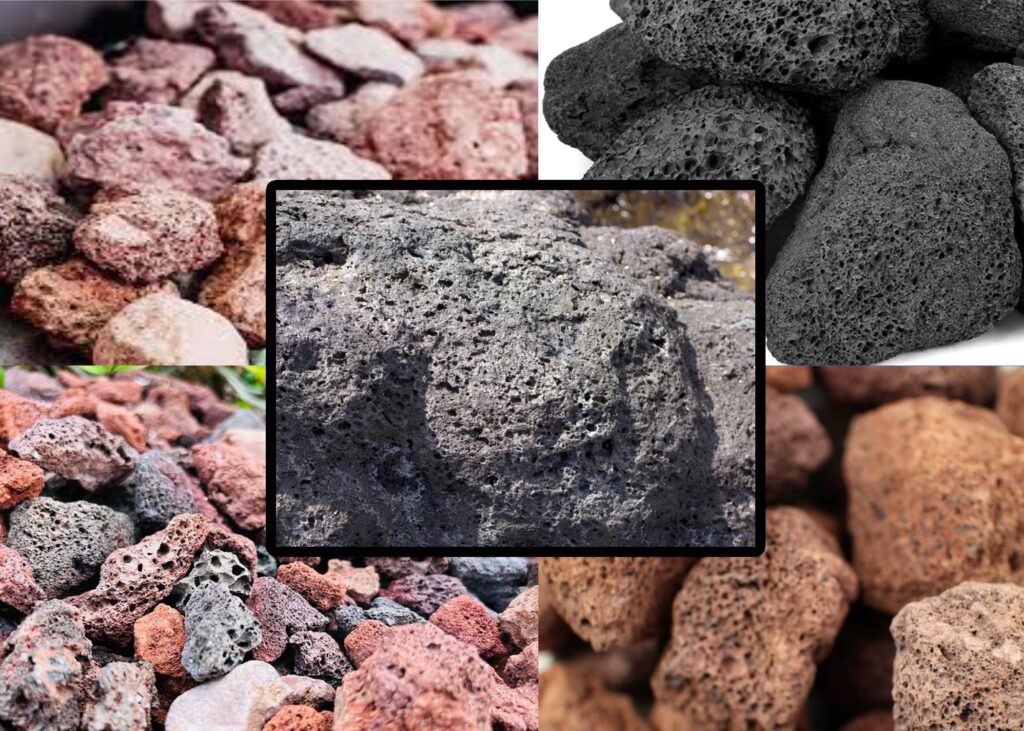Lava rock is a type of rock belonging to the igneous rock family formed when molten lava cools and solidifies. It is composed of minerals like quartz and feldspar, which does not offer termites a favorable environment and breeding space. Read on with us as we tackle the question, does lava rock attract termites?
Lava rock is often used for landscaping or construction, as it is durable, fire-resistant, and aesthetically pleasing. However, some may wonder if lava rock attracts termites or increases their destructive activity, as termites are notorious for causing damage to structures and crops. This article will explore the relationship between lava rock and termites based on scientific insights, expert opinions, and practical implications.
What Attracts Termites?
To understand whether lava rocks attract termites, one should first understand more about the constituents of termite food and the optimal environmental standards that attract them.
Termites are wood-eating insects that are attracted to damp and dark places where they can find food and shelter. They construct their colonies inside wood and other cellulose-based materials, such as paper, cardboard, and plant fibers. Termites can cause significant and irreparable damage to structures and crops, weakening the integrity of wood and consuming valuable resources.
The most important factor that affects termite attraction is moisture content. Termites need water to survive and thrive, and they will seek out moist and humid environments. If a water source is near wood or other materials, termites will be more likely to infest them. Therefore, it is essential to prevent water accumulation and leakage and to ensure proper drainage and ventilation in and around structures.
Another factor that influences termite attraction and infestation is temperature. Termites are more active and aggressive at higher temperatures, as they can digest wood faster and reproduce more. Some studies have shown that termites prefer temperatures between 25°C and 35°C and that they can tolerate temperatures up to 50°C. However, extreme heat can also kill termites, as they can dehydrate and lose their body fluids. Therefore, it is advisable to monitor the temperature of the soil and the structures and to adjust accordingly.
Does Lava Rock Attract Termites?
There is no scientific evidence that lava rock attracts termites or increases their activity to date. On the contrary, some studies have suggested that lava rock can be a natural deterrent for termites and other pests, as it can create a physical barrier that prevents them from accessing wood and other materials.
For example, a study by the University of Kentucky found that lava rock mulch reduced the number of termites and ants in a test plot compared to pine bark mulch. The researchers concluded that lava rock mulch can be an effective option for termite management as long as it is applied correctly and maintained regularly.
However, this does not mean lava rock is completely termite-proof, as other factors can influence termite attraction and behavior. For instance, if lava rock is used in landscaping or construction, it is important to ensure proper drainage and ventilation, as water can accumulate under or around the rocks and create favorable conditions for termites. Additionally, lava rock can retain heat and increase the temperature of the soil, which can also affect termite activity. Therefore, it is advisable to regularly monitor the soil and rocks’ temperature and moisture levels and adjust accordingly.

What are the Practical Implications of Using Lava Rock in Termite-Prone Areas?
The practical implications of using lava rock in termite-prone areas depend on the context and the purpose of the project. Lava rock can be a good option for landscaping or decoration, as it can enhance the area’s appearance and fire resistance. However, it is not a substitute for proper termite prevention and control measures, such as applying termite-resistant treatments, removing wood debris, and inspecting for signs of infestation. Lava rock can also be used for construction purposes, such as building foundations, walls, or roofs, as it can provide strength and durability. However, it is important to note that lava rock is not a structural material, and it should be used in conjunction with other materials, such as concrete, steel, or wood, to ensure stability and safety. Moreover, lava rock can be expensive and difficult to transport and install, which can increase the cost and complexity of the project.
What are the Recommendations or Mitigation Strategies if There is Evidence of Termite Attraction to Lava Rock?
If there is evidence of termite activities around lava rock in your area, it is recommended that you take action to eliminate the infestation immediately and prevent further damage. Some of the possible steps are:
- Remove the lava rock and inspect the underlying soil and materials for signs of termite activity, such as tunnels, mud tubes, wings, or droppings.
- Treat the affected area with a termite-killing product, such as bait, fumigant, or heat, following the manufacturer’s and pest control professional’s instructions and precautions.
- Replace the lava rock with a different type of material, such as gravel, stone, or metal that is less likely to attract termites or retain moisture and heat.
- Apply a termite-resistant treatment to the wood and other materials in contact with the lava rock, such as borate, copper, or resin, to protect them from termite damage.
- Maintain a regular inspection and monitoring schedule to check for any signs of termite activity or recurrence and to adjust the moisture and temperature levels of the area as needed.
What are the Expert Opinions or Insights from Entomologists or Pest Control Professionals?
Expert opinions or insights from entomologists or pest control professionals can validate the information presented and provide more specific and practical advice. For example, Dr. Michael Potter, an entomologist at the University of Kentucky, states that lava rock can be an effective mulch for deterring termites as long as it is applied correctly and maintained regularly. He also recommends using lava rock in combination with other methods, such as baiting, fumigation, or heat treatment, to eliminate existing termite colonies and prevent future infestations. Similarly, Mr. John Dawson, a pest control specialist at the renowned Termite control organization, says that lava rock can be useful for termite management. Still, there are better solutions than this one. He advises homeowners to consult with a professional before using lava rock, as they can assess the situation and suggest the best course of action.
Does Lava Rock Attract Termites? Conclusion
As we covered in the beginning, lava rock is a type of igneous rock often used for landscaping or construction, as it is durable, fire-resistant, and aesthetically pleasing. However, some may wonder if lava rock attracts termites or increases their activity, as termites are notorious for causing damage to structures and crops. Lava rock does not attract termites or increase their activity based on scientific insights, expert opinions, and practical implications. Still, it is not completely termite-proof, as there are other factors that can influence termite attraction and behavior, such as moisture levels, temperature, and environmental conditions. Therefore, it is advisable to use lava rock with caution and care and to implement proper termite prevention and control measures, such as applying termite-resistant treatments, removing wood debris, and inspecting for signs of infestation. Lava rock can be a good option for landscaping or decoration. Still, it should not be used as a substitute for structural materials, such as concrete, steel, or wood, to ensure stability and safety. Lava rock can also be expensive and difficult to transport and install, which can increase the cost and complexity of the project. Suppose there is evidence of termite attraction to lava rock. In that case, it is recommended to immediately eliminate the infestation and prevent further damage by removing the lava rock, treating the affected area, replacing it with a different material, applying a termite-resistant treatment, and maintaining a regular inspection and monitoring schedule. Expert opinions or insights from entomologists or pest control professionals can validate the information presented and provide more specific and practical advice.
